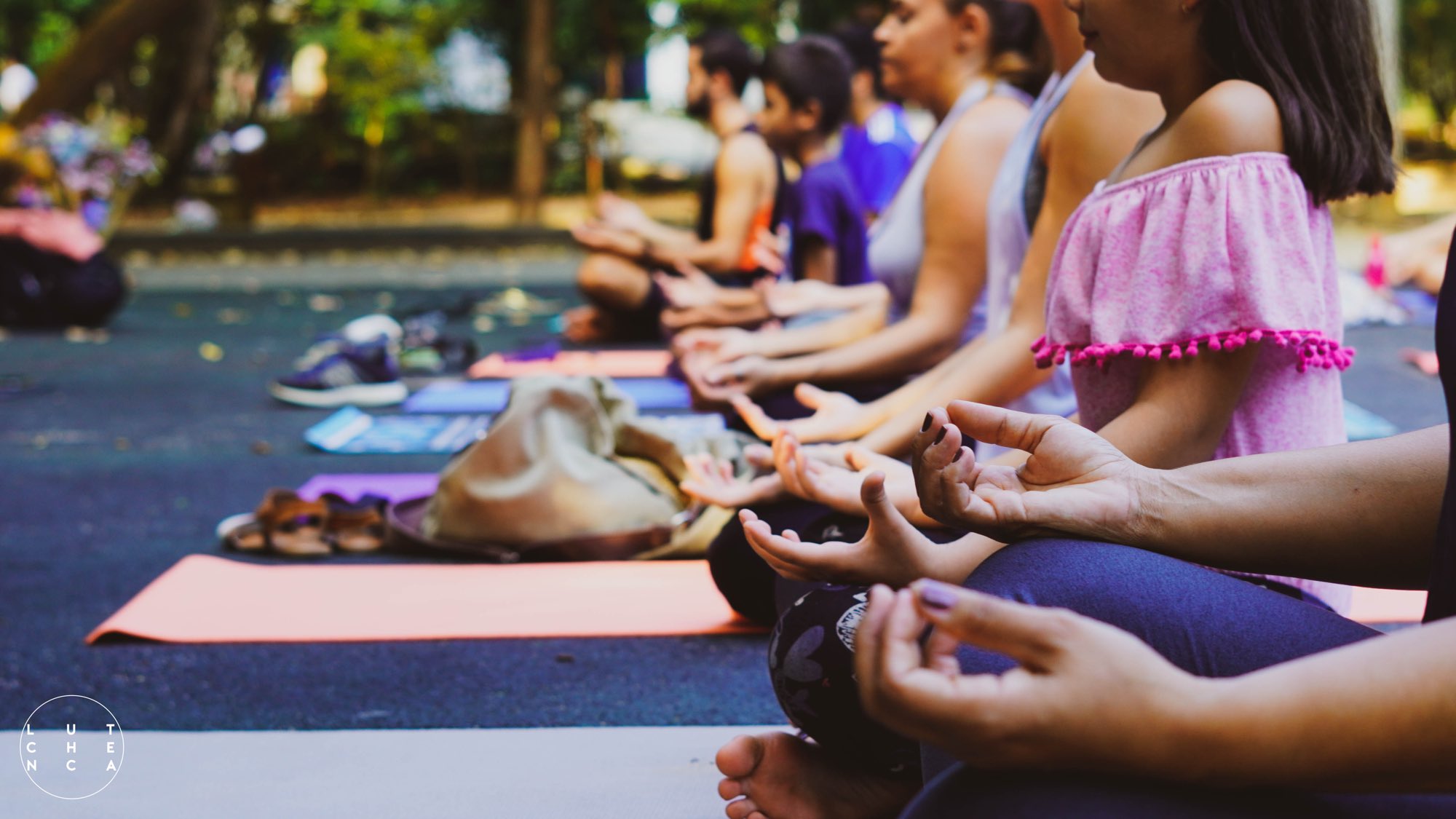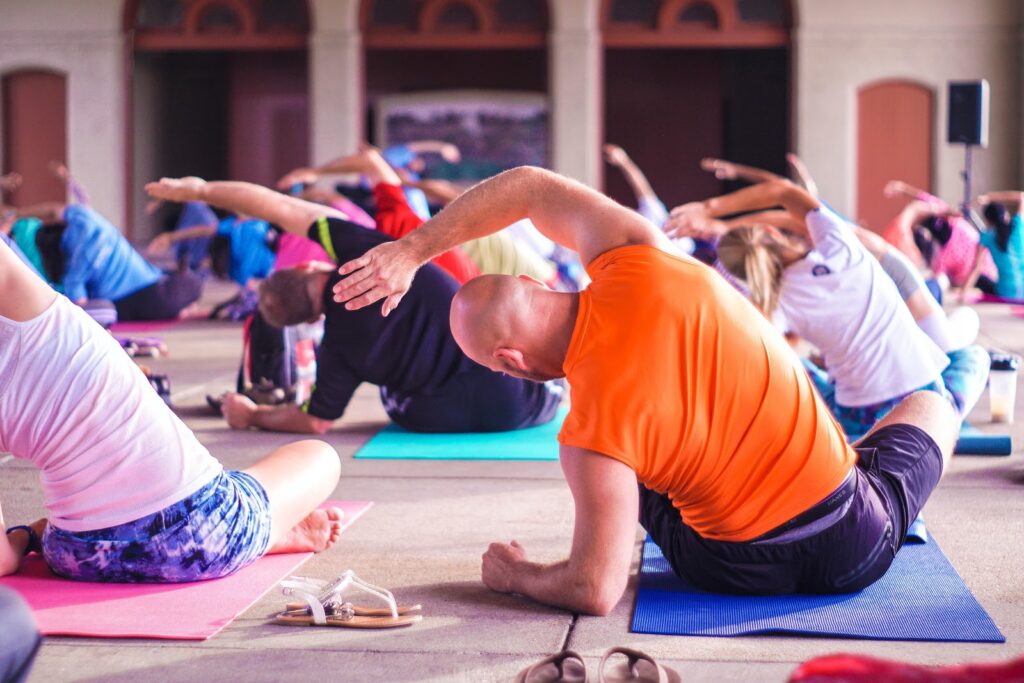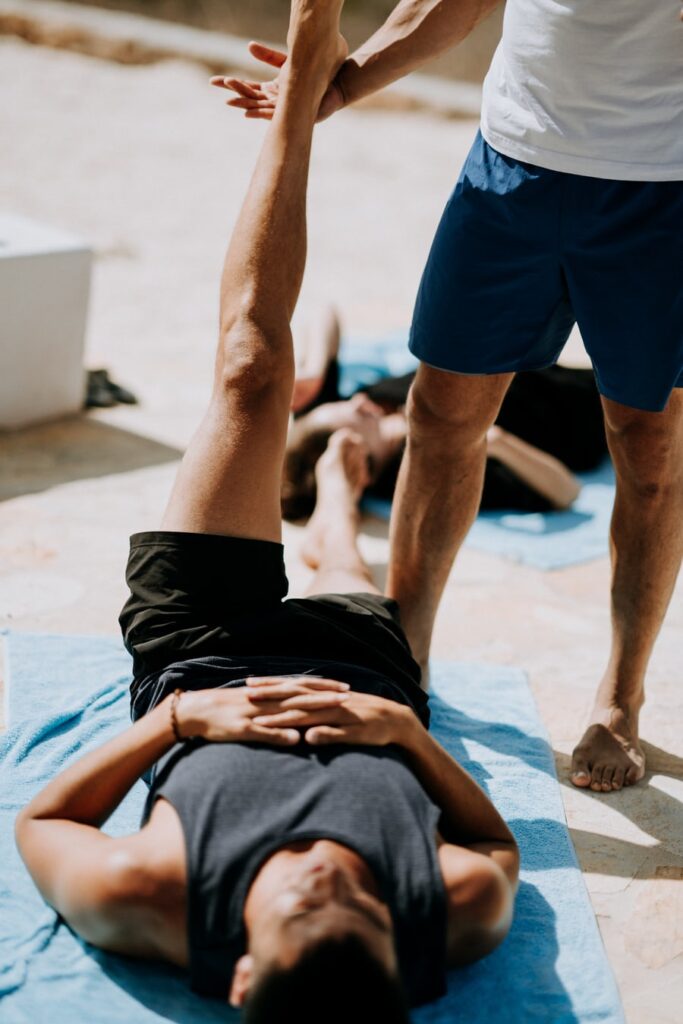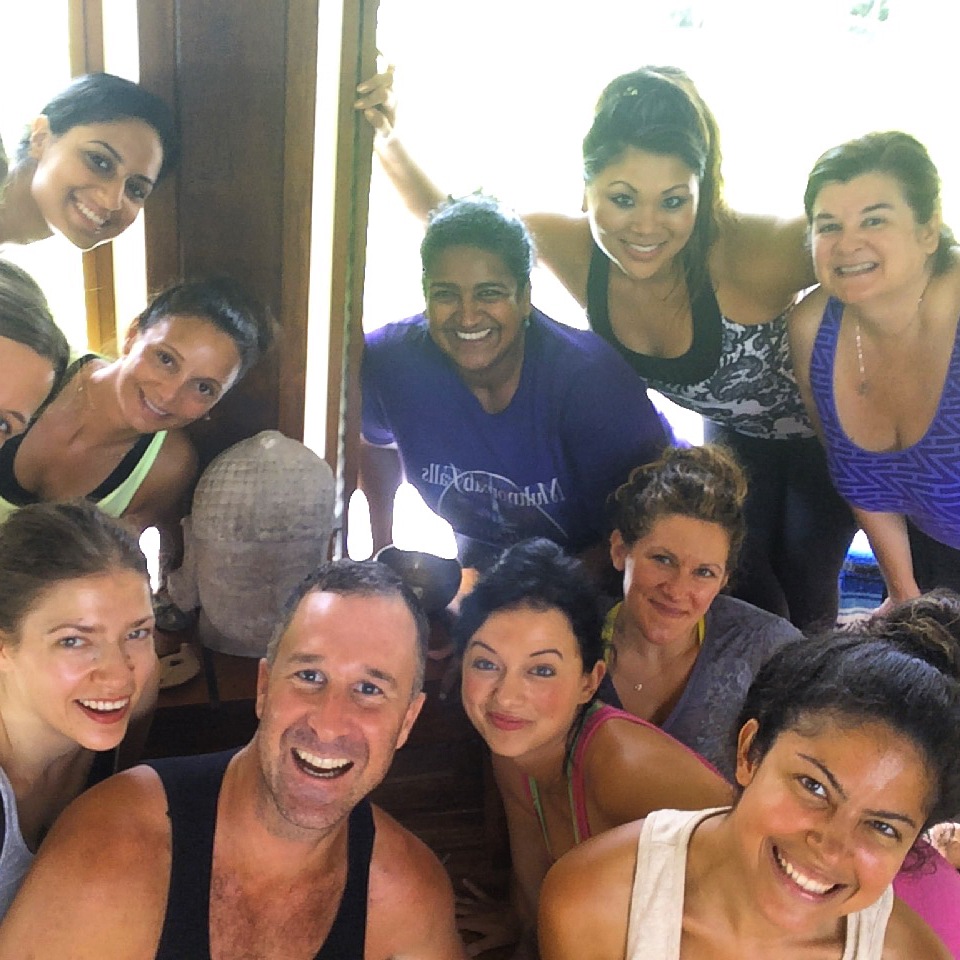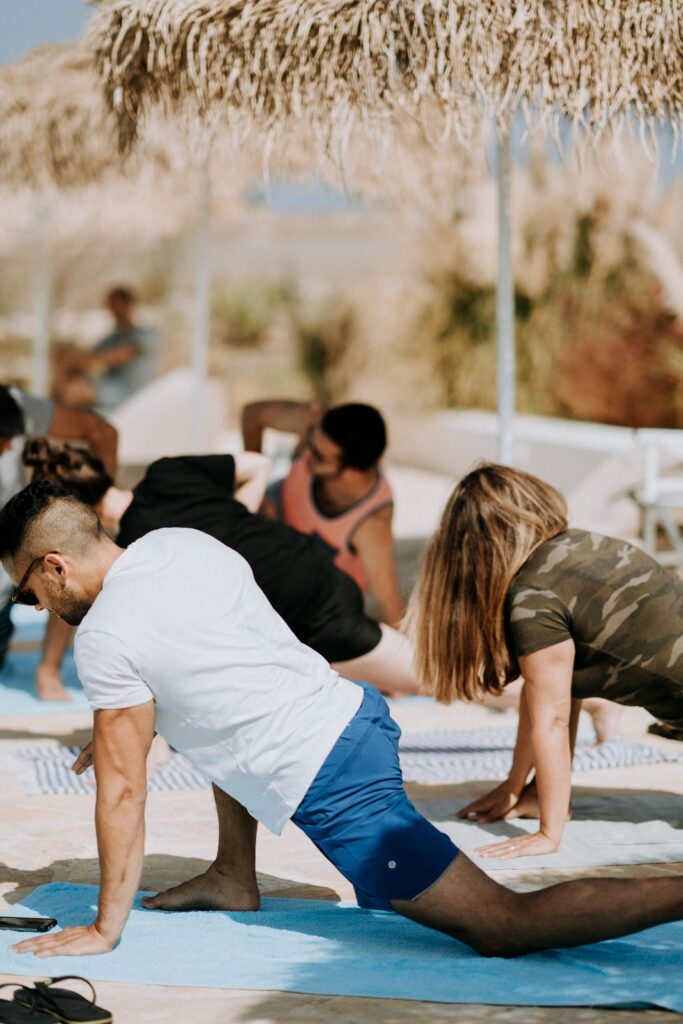Language is meaningful.
The words we use have the power to harm or heal.
As yoga teachers, we are likely the only person talking when we enter a yoga class to teach. In this position of influence, we should hold our verbal language with as much importance as the sequence we are about to teach. Words are powerful. When we guide others through their practice using our words, we should mindfully choose what we say and how we say it.
Because the words we use can harm or heal our students.
In yoga, more often than not, verbal language is overlooked. And it’s the very thing that can make or break a persons’ experience.
A yoga mat is a perfect place for a person to move through the emotions that run through their body. If we aren’t mindfully choosing our words to guide them through this practice, we are likely causing some harm.
Reminding students to tune into their bodies and identify with their own lived-in experience of this practice will encourage students to reclaim their bodies and heal. This is an excellent practice for creating inclusive environments.
But to do this, we need to be intentional with our words.
Here are some language suggestions for creating an inclusive yoga class and
How To Be More Inclusive in Your Yoga Class
Make it clear that the class is non-judgemental and free from pressure.
You are guaranteed to encounter a mixed ability class where half have been practicing for decades, and the other half are here for the first time.
Help your students feel at ease by making it clear that their yoga practice is their own. At the beginning of your class, you could offer rules that state there is no judgment of the self or of others, no pressure, and no competition. Reminding students to stay in their experience during practice will provide them with the agency to work with what they have and not what they wished they could be.
Normalize opting out of poses creates opportunities for diversity in your yoga classes
And replace “modification” with “version.” When new students enter your class, especially if they are new to yoga, they likely won’t know what to expect. Being suddenly put in a pose that they are 1) unable to do or 2) don’t want to do can make for an uncomfortable practice.
Normalize all the variations of a pose and relay that there are no winners or medals for getting through all the poses or holding them the longest.
Due to illnesses or body frame, there may well be people who will always opt for a low-impact pose. Our responsibility is to ensure that they don’t feel less than or unable to do ‘real yoga’ because of this choice.
Refrain from mentioning the hierarchy or value of the full expression of poses.
Everyone’s practice is their own. The full expression of a pose isn’t always going to be the end goal for everyone.
If your cues sound like, “If you can’t do XYZ, you can stop at…” then I invite you to pause and rephrase. This uses language that denotes there is one correct way to fulfill a pose, and that if you can’t, it is less than.
When practitioners have injuries or are in bodies that just don’t move in certain ways, then the ‘full expression’ of the pose or the use of a prop is what’s not working, not their body. But it’s easy for a practitioner to feel they are incapable.
By removing the hierarchy of poses and demonstrating all expressions of it as equal, we encourage students to listen to their bodies and honor where they are today.
Keep your opinion to yourself.
When cueing students into their next poses, it’s easy for us to add our personal experience. Which is fine when we preface it with, ‘When I do this pose, I feel…..’ But most often we don’t. We say things like, ‘This will feel good,’ or ‘you’re going to feel a nice stretch.’
This can be very harmful as we tell people how they should feel, which removes control over their own bodies’ experience.
Instead, instruct from a place of inquiry. Use cues such as,
- “I Invite you to try….”,
- “Explore the sensations when you…”,
- “What does it feel like when you…”,
- “Try like this… or like that”,
without any pressure to feel or experience a certain way.
Everybody feels sensations differently in their bodies. Encourage them to explore and track their feelings. It is their practice, and they are in complete control.
Avoid gender-specific language as well as generalizing based on gender-specific anatomy.
When we address our class with, ‘Welcome ladies!’ we can exclude those who do not identify as such. We might be in a room full of what we feel are women, but we cannot automatically know someone’s gender just by looking at them.
Removing gender-based pronouns out of your greetings will foster an environment where everyone is welcome no matter who they are.
Similarly, we also tend to mention gender-based body parts as part of our instruction or guide students with gender-specific instruction. We’ll say,
‘This pose is usually easier for men as they have more strength in the upper bodies’
or
‘Ladies, this will give you a feminine and lean body.’
Doing this can disorient a student who doesn’t fall on that spectrum, and make them feel self-conscious of their bodies and their perceived gender.
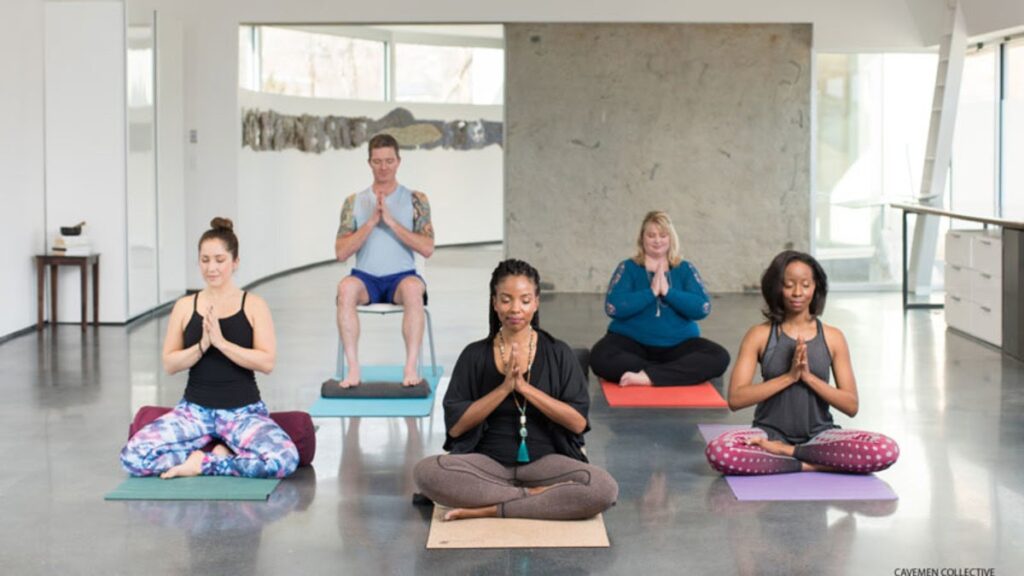
Ask if anyone has injuries or concerns.
People in bigger, disabled, or non-conforming bodies tend to face tremendous backlash in environments that does their best to pretend they don’t exist. Ask if anyone has any injuries or concerns and try your best to remember and follow up. Creating an environment where it’s normal to discuss bodies or ‘imperfections’ will give the message that who they are, as they are, is welcome here. And it is empowering and extremely valuable to normalize the issues we all face.
Stop using metaphors and similes to describe feelings and sensations.
When you use metaphors and similes of what seems like an ideal sensation, such as ‘gentle as a baby’ or ‘the rocking waves of a boat,’ we enforce our personal experiences. But this language could have negative connotations to those with different life experiences.
A lot of the descriptive language we use to relate to things comes from privilege, and not everyone gets to experience them. You could have mothers who have experienced a stillbirth or the death of their newborn baby or refugees that have experienced the harsh realities of arriving in a new country. At the least impactful, these words can snap a person out of their practice and into their heads. At the most impactful, we have the potential to trigger deep traumas.
Using your words wisely, simply, and delicately.
Don’t dissociate from the origins of yoga.
When we dissociate culture, we inevitably assign it a new one that fits our lifestyle. And 99% of the time, it’s going to be associated with mainstream culture. This does not support or resonate with anyone who falls outside the mainstream image. It becomes exclusionary through a false association.
When we ignore yoga’s origins when we teach, we potentially “sever a deep connection to a practice rooted in cultures for generations.”
Yoga was born in India, but it is for everyone. And as yoga teachers, it’s our responsibility to stay integral to the practice. You don’t have to read Sanskrit or give a Dharma talk every lesson, but you can provide information when necessary and display that the yoga you teach comes from the cultural tradition.
All practitioners should be aware of this, and teachers should comfortably relay this in their classes.
Using terms like ‘yoga body’ or ‘yogis’ to describe an ideal practitioner is damaging, exclusionary, and completely false.
Hold yourself accountable.
When you make a mistake, be willing to correct yourself out loud. Instead of holding on to the guilt, say it aloud, make the intention to change, and release the burden. Maybe you’ve misgendered someone or offered a cue that did not land well with some, a simple, “Thank you for letting me know, I’ll do better next time” can be well received. This helps cement good language habits for yourself, but it also shows to your class that you can recognize your faults and have the intention to change.
It’s OK to not know something. It’s not OK to ignore it.
Sometimes when we don’t understand something, we pretend it’s not there. Most of the time, it’s not that minorities feel prejudice in yoga classes. It’s actually that they feel unseen, and that their needs are being ignored.
As yoga teachers, we mustn’t ignore or exclude anyone in our classes. Skirting around the obvious makes for awkward interaction and prevents the real conversation from taking place. If you don’t know something, it’s OK, just don’t ignore it. Move through a place of compassion for yourself and for others involved and get comfortable asking questions.
Be real and honest about what you don’t know, and correct yourself when you do know.
Avoid spiritual bypassing and step into authentic leadership.
Yoga shines a light on all of our personal issues. As yoga teachers, we need to learn how to create space for that and not sidestep it with spiritual jargon, ideas, or beliefs. Phrases such as ‘Good vibes only’ have some real negative connotations for those experiencing hardship. Because the reality is that not everything in life is ‘love and light.’
As yoga teachers, it’s essential to know that creating an inclusive yoga space means accepting people in their entirety and allowing them to nurture and heal with yoga as their ally. Whichever way that may manifest.
There is no place for the ego when it comes to inclusivity in yoga. The last thing we want is to undermine another’s human experience because we’ve failed to recognize our own.
Creating an inclusive environment means to humble ourselves, and any communication we do has to come from the heart. Talk about your own experiences with your class to open up dialogue and create a safe space.
When we intentionally curate our classes to be inclusive, whichever way we try, we open up opportunities to create safe and welcoming spaces.
Making our classes inclusive is an ongoing dialogue, and there are always opportunities to continue learning.
Seek out inclusivity training to supplement your teaching and be mindful to implement kinder language in your classes. When we put our student’s experience first, we will be on the right path to building trust and safety in our classes.
***
Are you unsure if yoga teacher training is right for you? We have tons of resources to help you make the best decision for yourself. Sign up for our 5-part series, Is Yoga Teacher Training Right For Me?
About The Author
Fai Fetwi has been exploring the depth of her being for most of her life. First, as an artist, then a teacher, and now a writer. She is intuitively and creatively directing an experience that allows her to be in her full expression, always.
Fai also works closely with others to help actualize their vision aesthetically and beautifully. She is the founder of Wildfai Creative, an agency specializing in web design, writing, and virtual assistance for conscious soulpreneurs.
You can usually find her in the middle of the jungle in an exotic location, self-reflecting, writing, and drinking excessive amounts of coffee.
You can read her reflections on being human at www.wildfai.com.


